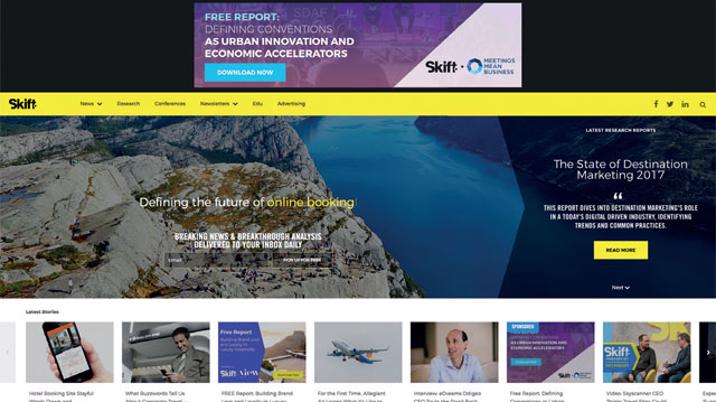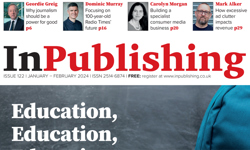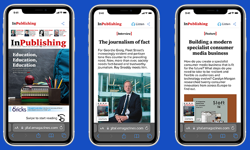
Media brands are busy experimenting with revolutionary new approaches to delivering content and services to their audiences, and new marketing solutions to their advertisers. The Digital Media Strategies conference in London in February explored some surprising directions taken by consumer and business media organisations.
I’ve summarised these as seven distinct strategies:
1. Defining a niche and dominating it
The only organisations who can win the scale game are Facebook and Google. For everyone else, being a generalist publisher will not be sustainable in the long run. Rafat Ali, founder of Skift, has focused on the travel vertical, and is providing intelligence across all sectors from the viewpoint of the customer experience. Skift’s revenues are growing at 50% and the standard subscription is $1600. IDG has focused on the technology niche, and expanded internationally, and has just been sold. News media are exploring their relative topic strengths, such as food and theatre for the Evening Standard, and sport for Trinity Mirror, to avoid being “stuck in the middle” between global scale and vertical domination.
2. Moving from display to marketing solutions
“Display is the new print,” stated Mike Friedenberg, CEO of IDG, a company which in the last decade has moved from print contributing the majority of revenues, to a business which is 90% digital and higher margin. 50% of IDG revenues are from lead generation activity, using content to provide advertisers with qualified buyers. The other half of revenues is from marketing solutions, creating custom content to raise awareness and stimulate demand. Friedenberg sees display as a dwindling revenue stream for media businesses.
Natasha Christie-Miller of Ascential would agree: Retail Week won’t even bother budgeting digital display this year. Their focus is on connecting suppliers with the right mix of retail decision makers through digital and events.
IDG co-creates content with advertisers that can then be used in their own media and social channels to drive leads. The value they add is experienced editors who know the audience.
Several media organisations are concentrating on video to drive advertising revenues. Shortlist Media is testing the social reach of video content, then creating series that can be sponsored, according to CEO Ella Dolphin. They have set up an in-house content studio, Family, to create branded content. Bloomberg uses its privileged access to set up video interviews with CEOs and thought leaders. Mashable concentrates on video content that puts a human angle on technology.
Evolve Media has built up personal relationships with over 300 social media influencers, and uses this network to match brands with specifically selected influencers to co-create content that then is shared with their followers and distributed more widely through social channels.
Smart media businesses are building up a relationship of trust with advertisers so that they can jointly create relevant marketing content that can be used outside their own media channels.
3. Learning from analytics and data
Analytics provide real power for media organisations. IDG’s Friedenberg believes this is the truly unique insight they possess – an understanding of how people going through a buying process use content to make more educated decisions about technology. IDG can then use this knowledge to create content for advertisers that helps move buyers through the sales process. And the sheer depth of data – for example they have 53 different data sets on the topic of information security – is hard for competitors or clients to replicate.
Mashable has its own data tool called Velocity which looks at web links related to content and can assess what content is read and shared most. Data informs the mix of stories and also the headlines. Evolve Media uses sophisticated tracking on its influencer-created content to measure the impact of brand marketing campaigns. Refinery 29, the young women’s publishing sensation with an audience of over 400m, combines analytics with editorial insight to shape its content strategy. A recent live event in Brooklyn had just 15,000 visitors in real life, but reached 100m users on Instagram.
Email databases can become a competitive advantage: Shortlist Media has a database of 500k of its affluent, urban “met-set” readers, and are exploring options for tailored content.
4. Rebalancing print and digital
Media brands are re-evaluating the relative value of print and digital, and the good news is that print still seems to have a place in the mix. Digital travel industry start-up Skift includes print within its subscription, described as a “strategically deployed packaged medium”.
Free urban print distribution is still working well for ShortList, Stylist and the Evening Standard, although advertising is shifting into digital. Future is actively pursuing acquisitions of established specialist print publishers, as values are low, while intending to transfer content and audience loyalty to digital platforms.
At the other end of the spectrum, the Independent believes that dropping print and focusing on digital has helped speed up the product development process and enabled greater editorial resource on web stories. And global technology publisher IDG is now 90% digital, and 100% digital in the US.
5. Developing reader subscriptions
Even media businesses which have been totally focused on advertising revenues are now contemplating reader subscriptions. Now that IDG has access to more capital, CEO Friedenberg is looking for acquisitions of subscription driven businesses, with an ambition of 25% of revenues coming from subscriptions. Free distribution titles ShortList and Stylist aren’t ruling it out. And while Teamrock couldn’t make online content membership pay, new owner Future is exploring the platform they developed, while continuing to invest in traditional print subscription revenue.
Meanwhile, The Times has grown its digital subscriber base to 187,000 at £300 ARPU and has developed premium advertising revenues for its affluent niche audience. Norwegian regional publisher Amedia responded to a decline in print subs with a focus on building a digital registered database of 775,000 and a paying subscriber community of 492,000 – no mean feat in a country with just 4m adults. Now 50-60% of their content is subs only, and they can charge the equivalent of £15-20 a month.
Business publishers have a longer track record with subscriptions. Ascential divisional CEO Natasha Christie-Miller puts part of their success down to an “obsession” with subscriptions and investment in sales skills especially for corporate subs, now 50% of their total subs revenues. They have developed premium data and intelligence products like HSJ Intelligence, which has grown to £3m revenue from scratch in three years, and has just been sold to Wilmington; an achievement most B2B media owners want to emulate.
Ascential’s recent acquisition of analytics company One Click Retail which helps large brands optimise their e-commerce sales, adds another data-driven, premium subscription product. And intelligence products can merge into consulting businesses – Christie-Miller alluded to Gartners’ model where subscribers get access to twelve mini 30 minute consultations with analysts per year.
Start-up The Business of Fashion has been developing a membership proposition for its international audience, which combines premium digital content with networking and exclusive events. Plus, they have created a subscription proposition for their recruitment advertisers where they can create awareness building content as well as advertise specific vacancies.
6. Establishing e-commerce
Dennis Publishing made a bold move into e-commerce with the acquisition of buyacar.co.uk, leveraging its automotive media brands which reach two-thirds of car buyers in the UK. As well as selling hundreds of cars each month, which contributes a quarter of the company’s revenue, Dennis now makes as much profit on providing the finance for car purchases, and has discovered that consumers (and the FSA) trust them to do this well. Paul Lomax, Dennis CTO, feels that many publishing skills, such as web user experience, SEO, creating engaging content, digital marketing, customer services, transfer surprisingly well to the e-tailing world, although they have hired in e-commerce expertise and are partnering with car dealers.
Future has built its own price comparison database, Hawk, but has also acquired Next Commerce, a digital shopping comparison business, and CFO Penny Ladkin-Brand stated her ambitions to develop e-tailing business in specialist markets. Affiliate revenue is already significant on sites like TechRadar.
Maybe it won’t be too long before we see e-tailers buying media businesses. Oh, hang on, didn’t Amazon buy the Washington Post?
7. Engaging audiences with events
Events have long been an important activity for business publishers; they make up 30% of revenues for the Retail Week brand. But it is in consumer markets that interest appears to have exploded. Hearst now has a broad portfolio of events, from the 5-day Cosmopolitan Fashion Fest to targeted Esquire Townhouse pop-up clubs, marketed to their database of high net worth individuals. Stylist Live is about to upgrade from the BDC to Olympia, and charges £30 plus per ticket. The Shortlist team has plans to roll out this event to other UK cities. All these events provide brand partners with opportunities to create real world experiences.
In the news media market, The Times largely uses events to bolster retention among its subscribers, but the Evening Standard has ambitious plans to grow its signature Theatre awards, and is launching London Food Month in 2017.
So, the prescription for survival as a media brand seems to be as follows:
• Identify your niche audience, and use insight and analytics to really understand what content they value, so that you can become indispensable.
• Stay open minded about the mix of digital content, print products and events and networking to achieve this.
• Look for opportunities to create subscription propositions, not only for readers but also for sub-groups of your advertisers.
• Ensure you really understand the marketing objectives of your advertisers, and win their trust so that you can co-create content that they can use in your media and also elsewhere in their marketing campaigns.
• Get to know more about when and why your audience buy products, and how you can develop e-commerce businesses.
• And explore innovative ways to bring your communities together in live events.
• Finally, don’t become reliant on one source of revenue, but develop a variety of products and services for your audience.










